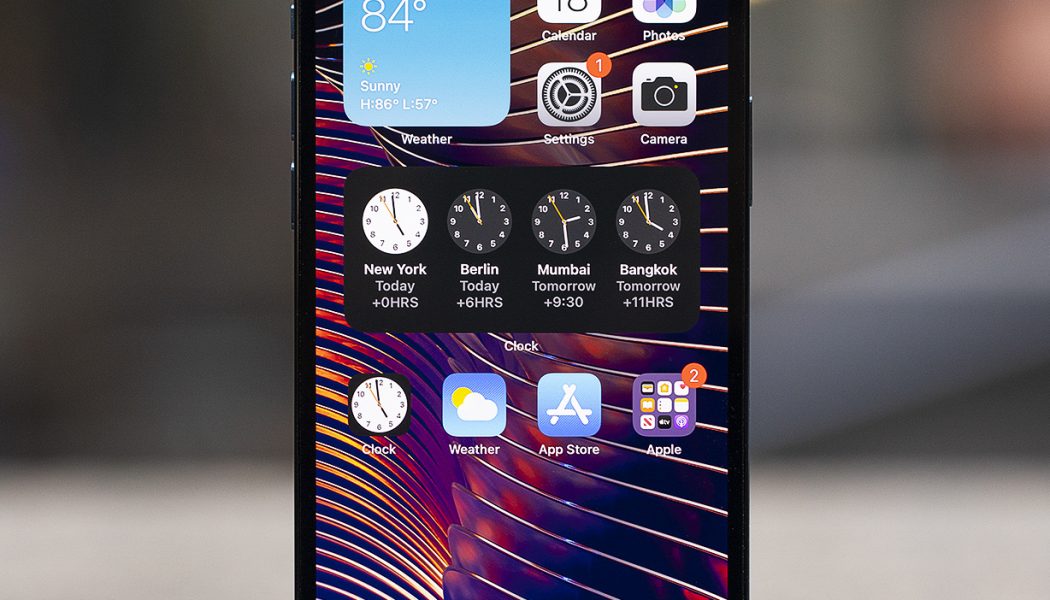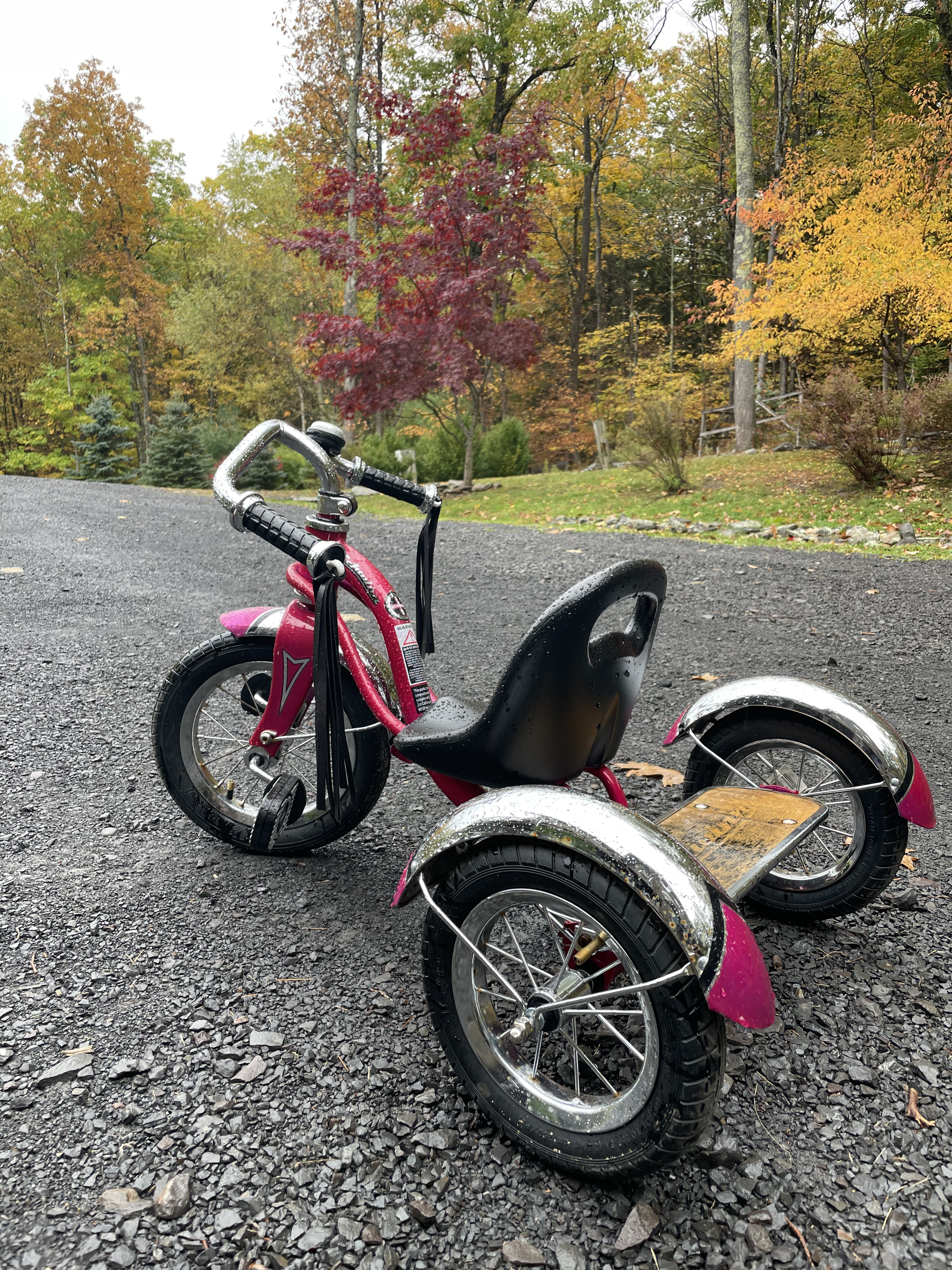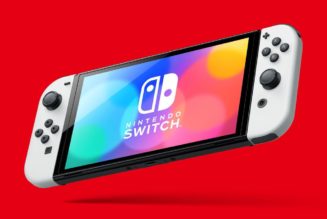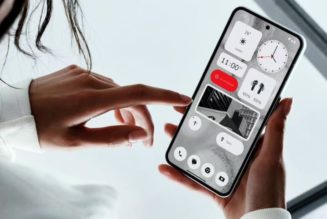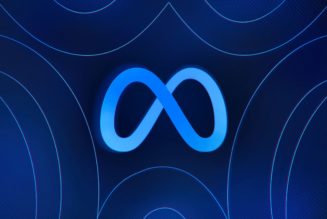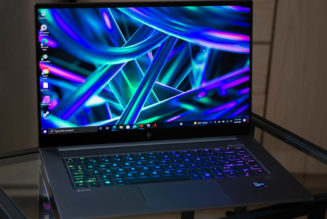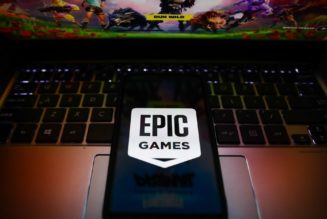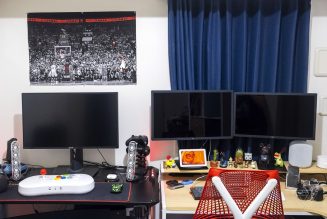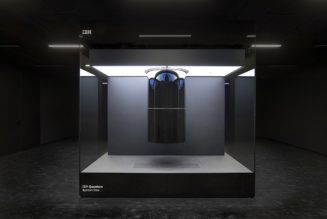It’s a big year for the iPhone: Apple’s iPhone 12 line is totally redesigned and features four models — the iPhone 12 mini, the iPhone 12, the iPhone 12 Pro, and the iPhone 12 Pro Max — at a range of screen sizes and price points. Across the board, Apple’s added new video features, a new MagSafe charging system, the new A14 processor, and all of the hype it can muster for 5G.
It’s obvious what sets the mini and Max iPhone 12s apart, but the two 6.1-inch models in the middle of the line are remarkably similar. The iPhone 12 and the iPhone 12 Pro have the same basic design, very similar OLED displays, and the same processors and 5G capabilities. The Pro adds an extra telephoto camera lens, a LIDAR sensor, a little more RAM, twice the base storage, and a shiny stainless steel frame. All that will cost you $999, around $200 more than a base iPhone 12 at the carrier-subsidized price of $799.
Now, there are some of you who are going to spend the extra money because this is the shiny one. In most cases, I would make the same choice because I have come to accept my weaknesses. But it’s worth diving in to see if the extra money is worth it, especially since the iPhone 12 now has an OLED display, which means the differences between the regular iPhone and the Pro are fundamentally much smaller than last year, when the regular model had a lower-resolution LCD.
So the real question for the iPhone 12 Pro is whether the small list of extra features justifies a roughly $200 price bump from the standard iPhone 12. And if you’re spending that much more, it might be worth it to wait a little while longer and spend another $100 on the iPhone 12 Pro Max, which will add a bigger display and a larger main camera sensor with a very intriguing new sensor-shift stabilization system that could offer a huge jump in picture quality.
That leaves the 12 Pro in a weird spot, and really, I think it comes down to how much you might use the telephoto lens or shoot portrait photos at night.
Then again, it’s shiny.
iPhone 12 Pro design
The iPhone 12 and 12 Pro share the same fundamental new design, which is very squared off and very flat — almost shockingly flat. Nearly every other phone has a curved edge and an obvious border between the display and the frame, but the iPhone 12s feels much more like a single piece. It reminds me a little of the iPhone 5, but more importantly, it looks and feels very different than any other modern phone, in the way the Apple is historically good at making older designs seem instantly out of date.
Oddly, the squared-off design also makes the iPhone 12 Pro seem more substantial than it actually is. It doesn’t look it, but it’s thinner than an iPhone 11 Pro.
As I mentioned, the 12 Pro is the shiny one, and the glossy stainless steel frame instantly picked up fingerprints. This is a phone you will be trying to keep clean quite often if you don’t put it in a case. Even still, this is the first iPhone in a long time that I’ve been sad about covering. It’s just nice to look at.
:no_upscale()/cdn.vox-cdn.com/uploads/chorus_asset/file/21973365/akrales_201018_4238_0443.0.jpg)
The front of the phone is covered in what Apple calls “Ceramic Shield,” a hybrid of glass and ceramic. Between the new material — you can’t call it “glass” because it’s technically not glass — and the new design, Apple claims the iPhone 12 line has four times better drop performance than the previous models, with the same scratch resistance. (I drop my phone a lot, so I’m excited to see how this goes.) On the back, you’ll find the same type of glass as last year, but the new design should improve its drop performance as well, Apple says. One thing Apple would not tell me is how resistant this stainless steel frame is to nicks and scratches… and we’ve already put a tiny nick in the frame of our review unit, even though all it’s really done is travel from video shoot to video shoot.
The iPhone 12 Pro’s OLED display is larger than the iPhone 11 Pro, at 6.1 inches, and the phone is slightly taller as a result. The display is otherwise basically the same as last year in terms of brightness and pixel density, which means it looks excellent, although it’s still a 60Hz refresh rate, which at this point is behind virtually every Android phone at $700 and up.
There are excuses to be made about Apple’s sales volumes and available display panel supply, but in the end, a 60Hz display is simply not very… pro. Indeed, Apple’s own iPad Pro has a ProMotion high refresh rate display. If you’ve only ever had iPhones, you will not really notice this because it is the same as ever. But if you have used a 120Hz display, the difference in smoothness when scrolling is certainly noticeable.
The bezels and notch at the top of the screen are still the same size, which more or less means eventually you just won’t notice them. Early adopters will notice that some apps need to be updated for this new screen size — Instagram is a little broken, as usual — but the iPhone ecosystem generally adapts quickly, so I’d expect a flurry of app updates to come.
On the sides of the phone you’ll find four standard antenna gaps, and US models have a millimeter-wave (mmWave) antenna window for ultrawideband (UWB) 5G on Verizon. Apple told us that holding the phone with your hand over this window shouldn’t affect wireless performance and that there’s no particular guidance on how to hold the phone. I have large hands and basically can’t hold the phone without covering the antenna window unless I try, and I didn’t have any issues during my brief UWB tests.
The back of the phone features Apple’s new MagSafe magnetic wireless charging and mount system, which feels like the connector equivalent of the summer before college for the first time: the future is bright and exciting, and you get to reinvent your whole situation from scratch. But the days of the Lightning connector are obviously coming to a close, and it’s okay to be sad about it.
MagSafe is extremely clever as a concept and exceedingly fine in reality. I am excited about magnetic car mounts and stabilizer gimbals and other accessories that don’t require fiddling to attach. I also think there will be neat uses of the additional alignment magnet just below the charging coil; that’s the one that keeps Apple’s just-okay wallet case attached correctly. Apple seems confident that an actual MagSafe accessory ecosystem will develop, unlike the iPad Smart Connector. There are already third-party chargers and car mounts and things being announced. (Apple claims taking its more standard cases on and off the phone is easier because of the magnets, and I have no idea what they’re talking about. It seems just the same as ever.)
:no_upscale()/cdn.vox-cdn.com/uploads/chorus_asset/file/21973364/akrales_201018_4238_0464.0.jpg)
:no_upscale()/cdn.vox-cdn.com/uploads/chorus_asset/file/21973363/akrales_201018_4238_0505.0.jpg)
Interesting possibilities aside, the actual MagSafe charging puck is pretty huge for something you might carry around with you even though it’s small for a wireless charger, and I’m not particularly excited about traveling with it in my bag. The cord itself is short, so it does feel like only a baby step toward a version that’ll work while you’re on the couch or in bed with a low battery. Apple has yet to come out with one with a longer cord, but it seems inevitable.
MagSafe is also expensive. If you want to use Apple’s $39 MagSafe charger so you can get fast 15-watt charging, you’ll need to buy your own 20-watt USB-C power adapter, or shell out for Apple’s at $19 because it’s no longer in the box. (In general, the removal of the power adapter and headphones from the iPhone box this year seems like a good thing but with mixed environmental repercussions.)
If you don’t want to pay that much, you can use any regular Qi wireless charger for up to 7.5-watt charging, same as the iPhone 11 line, and Apple says third parties will be able to build approved MagSafe chargers in the future, so hopefully there are some cheaper options soon.
All in all, MagSafe is a very clever idea that needs some more bake time in the wild before it can actually replace the Lightning connector and deliver the port-less iPhone Apple seems to be headed toward in the future.
:no_upscale()/cdn.vox-cdn.com/uploads/chorus_asset/file/21973374/akrales_201018_4238_0293.0.jpg)
iPhone 12 Pro Camera
Last year I said the iPhone 11 Pro had the best camera on a smartphone, and it’s not like the iPhone 12 Pro went backward. But it’s only a small step forward — enough to stay just ahead of the competition. Most of the improvements are fairly minor.
The main camera has a very slightly brighter lens than last year, which helps it in low light, and Apple’s new Smart HDR 3 processing seems to be, well, a little smarter. The noise reduction is improved and looks better than the iPhone 11: photos look less grainy, and there’s a little more detail. The photos are also slightly more contrasty; every year, Apple seems to be more willing to let highlights be highlights and shadows be shadows, which is a look I’m personally fond of.
All four cameras on the phone can do night mode now, which is very nice to have, but it’s most useful on the front camera for night mode selfies. Using the tele or the ultrawide for night mode shots works, but I’d stick with the main camera. It’s the best camera on the phone, and it takes the best images.
There are some other small but noticeable photo improvements over the 11 Pro: the ultrawide lens distorts a little less at the edges, and photos from the ultrawide and telephoto are a tad sharper and more detailed. There are also some new settings: you can actually turn lens correction off, and you can turn off both Smart HDR and “scene detection,” which tries to intelligently recognize a shot and expose it correctly. It’s nice to see Apple embrace additional camera options, but I would generally leave everything flipped on; if you are offended by auto camera modes, you should just use an app with good manual controls like Halide.
:no_upscale()/cdn.vox-cdn.com/uploads/chorus_asset/file/21973385/akrales_201017_4238_0022.0.jpg)
The 12 Pro also has a new LIDAR sensor on the back, something we first saw on the iPad Pro. If you’re deep into AR gimmicks, you’re going to love the LIDAR sensor. It makes AR gimmicks better than ever. (I do not love AR gimmicks, but the ones I tried were quite nice.)
In regular, non-augmented reality, most people will take advantage of the LIDAR sensor on the 12 Pro in low-light situations, where it enables the camera to focus much more quickly — up to six times faster, according to Apple — and also take night mode portrait shots.
:no_upscale()/cdn.vox-cdn.com/uploads/chorus_asset/file/21973854/IMG_0153.jpg)
In testing, the focus was indeed fast, and iPhone 12 Pro low-light photos were sharper than the iPhone 11 Pro because it has a brighter lens that allows for faster shutter speeds.
Night mode portrait shots are remarkably impressive — although they only work with the wide lens, not the tele. Google’s Pixel 5 can take Night Sight portrait photos as well, but it can be fiddly to make it happen. The iPhone 12 Pro just took impressive photos, no fiddling required.
Unless you are extremely committed to either AR gimmicks or night mode portrait photos, I don’t think you’ll get much value out of the iPhone 12 LIDAR sensor. When you take photos in regular light, the camera focuses just like always; the LIDAR sensor isn’t active. In many ways, it feels like LIDAR is mostly on the phone so that Apple and other people can figure out what to do with it in the future.
Compared to the Google Pixel 5 and the Samsung Note 20 Ultra, the iPhone 12 Pro delivers exactly what we’ve come to expect from Apple: great photos in almost every case, with balanced colors and great details. I still prefer the Pixel look ever so slightly, and I am reliably informed that there are people who prefer Samsung’s hyperrealistic colors, but the iPhone 11 Pro was the phone to beat. The iPhone 12 Pro slightly improves on the 11 Pro in most situations and adds the ability to get usable shots in even harder edge cases.
The big thing hanging over all of this is that we have yet to test the iPhone 12 Pro Max, which has a much larger main camera sensor with a new stabilization system. The tele lens on the 12 Pro is nice to have, but there’s a reason Apple puts the ultrawide on the regular 12: it’s just more versatile. If you’re spending extra money because you want a slightly better camera on your iPhone, I’d wait to see if spending just a little bit more extra money can get you a far better camera. This, as my colleague Dan Seifert says, is how they get you.
:no_upscale()/cdn.vox-cdn.com/uploads/chorus_asset/file/21973384/akrales_201017_4238_0053.0.jpg)
Speaking of video, the other big new camera feature across the iPhone 12 line is the ability to create Dolby Vision HDR video. There is no way to talk about this without falling deeply into the weeds of video formats, but I promise you it’s going to be fun. I promise.
HDR stands for high dynamic range. You’re probably familiar with the term from still photography, where HDR systems in smartphone cameras have been a revolution. But to understand HDR in video, you have to set aside everything you know from photography HDR. It’s very, very different.
HDR in video basically means that the brightest part of the image can get much brighter, and you can see more detail in the bright parts of an image compared to SDR, or standard dynamic range. This is actually really easy to show on the iPhone. When you shoot video, it captures in HDR, and when you swipe through your camera roll to play it back, you can see the display change modes and get brighter. That’s HDR.
HDR videos also generally have more available colors in them. SDR videos can have 16 million colors, while HDR videos on the iPhone have 700 million colors. That’s a lot of additional colors, and it means things like gradients and sunsets and so on look smoother. Add it all up, and HDR video is brighter and more colorful than SDR video, which is great.
Watching HDR video has gotten very easy over the past few years. Almost every new higher-end TV and phone supports HDR, and most of the major streaming services offer movies and TV shows in HDR. (HBO Max is the most notable exception.) But it’s still been hard to shoot and share HDR video yourself. It’s not impossible: Samsung phones since the Galaxy S10 can shoot in a format called HDR10+, but it’s a setting that’s tucked deeply away. And if you’re really motivated, there are workflows to get HDR video out of everything from a Sony RX100 Mark V on up. But none of that is easy.
So the iPhone shooting HDR video by default, out of the box, is a big deal.
I’ve been saying “HDR” this whole time, not “Dolby Vision.” That’s because Dolby Vision is one kind of HDR — a format — and there are lots of HDR formats. With lots of formats come compatibility problems. And, yep, Dolby Vision on the iPhone 12 has some compatibility problems — but not as many problems as I feared. Apple and Dolby have done something very smart to ensure long-term compatibility at the cost of some short-term incompatibility.
Dolby Vision and the rival HDR10 format are what’s called perceptual quantizer (PQ) HDR systems. And PQ systems are not backwards compatible with SDR displays, meaning Dolby Vision video has only been compatible with Dolby Vision displays. (Playing a Dolby Vision video on a non-Dolby Vision display would look completely wrong.) If you wanted to watch a Dolby Vision video on a regular display, you would have to re-encode it into SDR — basically, make an entirely new video file.
But the iPhone 12 shoots video in a newer version of Dolby Vision called Profile 8.4 that’s built on a standard called HLG, or hybrid log-gamma. HLG works differently than PQ systems; it was developed by broadcasters like the BBC and NHK to be backwards compatible with SDR displays so they would only have to broadcast one video stream.
All this means that an iPhone 12 HDR video is a 10-bit HLG file with additional Dolby Vision metadata on top, and it will happily play back as SDR on SDR displays, HLG on HLG displays, and Dolby Vision on Dolby Vision displays that support Profile 8.4. And iOS 14 is smart enough to know when the apps and devices you’re sharing video to don’t support this new format, and it’ll make sure you send something that works. It is all very clever, even though, in practice, what it means is you’re mostly sharing SDR video.
There’s a catch. (Of course.) Dolby Vision Profile 8.4 is a new version of Dolby Vision, and that means a bunch of older Dolby Vision gear out there needs to be updated to support it. So I can’t promise you any random Dolby Vision TV with AirPlay 2 will play back iPhone 12 Pro video in Dolby Vision. You’ll have to check to see if your TV supports Profile 8.4. Dieter’s older Vizio P65 has AirPlay 2 but played back iPhone 12 Dolby Vision video in SDR. My 2016 LG B6 OLED supports Dolby Vision but not profile 8.4, and it wouldn’t play an iPhone 12 video file from a USB stick at all. It’s also old enough now that it’ll probably never get another software update to do so. And so on.
That said, new TVs will naturally support the newest versions of Dolby Vision, and you can always just plug in an Apple TV 4K and AirPlay to that. (The way iPhone 12 Dolby Vision video works with an Apple TV is wonky, though: you have to run the Apple TV in Dolby Vision mode all the time to make it work. If you are a sane person and use your Apple TV in SDR with “match content” turned on, you will still always see SDR video from an iPhone 12. I hope Apple fixes this very quickly.)
Oh, and if you have a Mac, Dolby Vision video won’t be supported until macOS Big Sur comes out, and we don’t really know when that’s going to be. I also don’t know when the likes of Instagram and TikTok and YouTube will support Dolby Vision video from the iPhone; right now, you will see your videos in SDR when shared to those platforms. (YouTube supports HDR video right now, but only in HLG and HDR10. Formats!)
So Dolby Vision video on the iPhone is a little complicated, and there will be some compatibility goofiness at the start. But over time, I’d expect it to fade away. TV manufacturers and social platforms have a lot of incentives to figure out how to play back people’s iPhone videos well, after all.
And in the meantime, it’s true that most people watch their smartphone videos on their smartphones, and iPhone 12 Dolby Vision video looks very bright and colorful on the iPhone 12 Pro and other newer iPhones and iPads that support HDR. I’m excited it’s there and am even more excited it is the default.
I was lucky enough to work on this review with Verge video director Becca Farsace, so I asked her for some thoughts on iPhone 12 Pro video quality in general. Here’s what she had to say:
There are three things I noticed when shooting video with the iPhone 12 Pro: a great level of detail, brighter footage at night, and light reflections for days. The iPhone 12 Pro can shoot up to 4K at 60fps and 1080p at 240fps, just like the 11 Pro. I was impressed with the video capabilities of the iPhone 11 Pro last year, and with the iPhone 12 Pro, it’s no different… like, it’s actually hard to tell the difference between footage from the 11 and the 12.
In perfect lighting conditions, the video is beautiful. Colors are punchy, details are crisp, and it can handle skin tones well. The 12’s footage is the slightest bit warmer during the day, but unless you are really trying to find a difference between these cameras, you won’t.
At night, the 12 Pro is a bit brighter overall and does a nice job of smoothing the dark areas to combat noise. The main sensor is certainly the brightest, and once you switch over to the ultrawide, things get a bit dark. But more concerning is when shooting at night, and using that main sensor, there are still little dots all over the frame! Any light coming directly into the lens, such as headlights from cars, casts lots of light reflections onto the image and it’s quite distracting. This was a problem with footage from the iPhone 11 Pro and that problem has not gone away.
But overall this camera system continues to be great and when you are playing it back on a device that supports Dolby Vision video files it looks incredibly colorful and punchy. That’s the main difference between the 11 Pro and the 12 Pro’s video: the new one shoots in Dolby Vision, as discussed extensively above. I’m excited to put the 12 Pro Max to the test with that larger sensor and optical image stabilization.
All in all, the iPhone 12 Pro camera remains one of the most powerful, capable smartphone cameras on the market right now. The problem is that the iPhone 12 Pro Max camera is coming out in less than a month. If you are the sort of person who buys a new phone for the camera, I would definitely wait.
:no_upscale()/cdn.vox-cdn.com/uploads/chorus_asset/file/21973387/akrales_201017_4238_0004.0.jpg)
5G on the iPhone 12 Pro
I am obligated to discuss 5G in a review of a new 5G iPhone, even though I personally do not find 5G compelling because I do not live anywhere close to a 5G service area on any of the major networks. I think that will be the case for a great many people for some time to come, and so I am happy to report the iPhone 12 Pro does just fine on LTE.
But I did spend a day in NYC, and I can report that Verizon’s Sub-6 “nationwide” 5G is basically fine. It’s there, and it was reasonably fast, although my iPhone 11 Pro on AT&T LTE could produce equivalent speeds in many cases. Verizon’s “nationwide” 5G network feels like the early days of LTE to me: I can’t tell if it’s always going to be this fast, or whether it will slow down as a flood of devices — like, say, aggressively subsidized 5G iPhones — hit the network. We’ll find out!
There’s a Verizon mmWave 5G tower just across the street from our office, and the iPhone 12 Pro was fast to latch onto it and light up the UW indicator. In a patch of 20 glorious square feet, I pulled over 2 gigabits per second down. (And 40 megabits per second up, which matched regular 5G.) If I walked 100 feet away, the signal dropped, and that was that. I hope you are not anticipating being very mobile with your 5G mobile phone if you have giant files to download. Using mmWave definitely made the phone get a little warm, and it seemed to drain the battery a little faster. It’s good that it’s very difficult to use mmWave, I suppose.
There’s much more on 5G in Dieter’s review of the regular iPhone 12, if you want to dig deeper. But I think for most people the experience of using 5G will be virtually the same as using LTE for now — not least because the iPhone will step you down to LTE to save battery life whenever it can, with a feature called Smart Data. In fact, if you’re in a 5G service area, you’ll see the 5G symbol at the top of the phone to indicate that you have access to 5G, but the phone might still be using LTE because it doesn’t think you need the extra speed. You can turn Smart Data off, but I can’t see any reason you’d want to at this time.
:no_upscale()/cdn.vox-cdn.com/uploads/chorus_asset/file/21973382/akrales_201017_4238_0143.0.jpg)
iPhone 12 Pro performance and battery life
The iPhone 12 has Apple’s new A14 Bionic processor, which is the first 5nm chip in a smartphone, and it feels lightning fast. I write that every year, of course: I wrote it last year about the A13 Bionic, and the year before that about the A12 Bionic. And those phones don’t necessarily feel slow — Apple still sells the iPhone 11 and iPhone XR with those chips in them, which means they will be supported for years to come. I continue to think Apple’s commanding lead in smartphone performance is most valuable to people at the end of a phone’s lifecycle than at the beginning — this phone is so fast that it’ll stay fast for a long time. That’s great and more important than a slightly higher synthetic benchmark score today.
There’s a U1 chip in the iPhone 12 Pro, just like the 11 Pro, and it’s still pretty much good for AirDrop. Apple does say that some neat U1 features are coming to the new HomePod mini, so we’ll have to see how those pan out, and if this system is ever really used for all the things it can seem like it can do. But for now, AirDrop.
iOS 14 runs great on the 12 Pro — unlike the buggy mess that was iOS 13 last year. For a more detailed rundown of everything iOS 14 includes, go read Chris Welch’s review.
Testing battery life on the iPhone 12 Pro was probably the hardest thing to do, since I don’t live anywhere close to a 5G service area, and I was only back in New York City for a single day to shoot our review video. But in that single day, it felt like the battery on the iPhone 12 Pro died a lot faster than I expected — after around 2.5 hours of screen on time I was at 18 percent. Of course, we were using 5G a lot for testing, and using the mmWave radio drains the battery faster, so it’s hard to say how representative this is. I asked Apple, I was told the company expects people to get a full day of usage out of the phone. In my normal quarantine routine where I’m on WiFi nearly all the time, that certainly seemed reasonable.
In the end, I think iPhone 12 Pro battery life is going to vary widely for people depending on how much they use 5G, especially mmWave 5G so this is something we’ll have to track over time. But I would definitely not expect the try-and-stop-me battery life we saw on the regular iPhone 11.
:no_upscale()/cdn.vox-cdn.com/uploads/chorus_asset/file/21973366/akrales_201018_4238_0435.0.jpg)
So that’s the iPhone 12 Pro. Is it worth $200 more than the standard carrier-subsidized iPhone 12?
Yes, because it is shiny.
That’s the best answer I have right now: it looks cooler than the regular iPhone 12, and some people value that, just like some people value a telephoto lens, the ability to take portrait photos in night mode, and LIDAR AR tricks.
But my instinct is to hold off on recommending this slightly more expensive iPhone until we’ve tested the even more expensive iPhone. The iPhone 12 Pro Max has a much bigger display and what could be a huge jump in camera performance for another $100, which feels like a lot more value for the extra money. So we’ll see.
It’s also hard to suggest that anyone spend more money than necessary upgrading their phone in the middle of a pandemic. If it’s time to upgrade and you want a new phone, the iPhone 12 Pro is a great choice — anyone with an iPhone XS or older will love the new cameras and enjoy the new design. I have a kid, and we upgrade every year because I always want to have the best cameras on our phones. But again, if you are upgrading for the cameras, it’s worth seeing how the best camera Apple thinks it can make performs on the Pro Max before making a purchase.
if you’re not upgrading for the cameras, the iPhone 12 Pro doesn’t offer so much more over the iPhone 12 that it’s a must-have upgrade. In many ways, most of the new features on the phone are ahead of their time. I don’t think 5G is all that big of a deal yet when the networks aren’t really built out, there aren’t exactly killer apps for it, and we’re all spending most of our time at home anyway. Dolby Vision video is right up my alley, but it still has to shake out in the wild a little. The U1 chip and LIDAR sensor… well, it certainly seems like they’re going to be big deals, but not quite yet.
I’m not trying to end this on a down note: the iPhone 12 Pro is a beautiful, powerful, and incredibly capable device. I enjoyed using it during this review, and the camera is extremely good. If you can find a patch of sidewalk with an mmWave signal, you will have a killer speedtest screenshot to share. It will make you happy if you buy one.
But if you’re going to spend the money to upgrade over the regular iPhone 12, I would definitely wait for iPhone 12 Pro Max reviews first.
